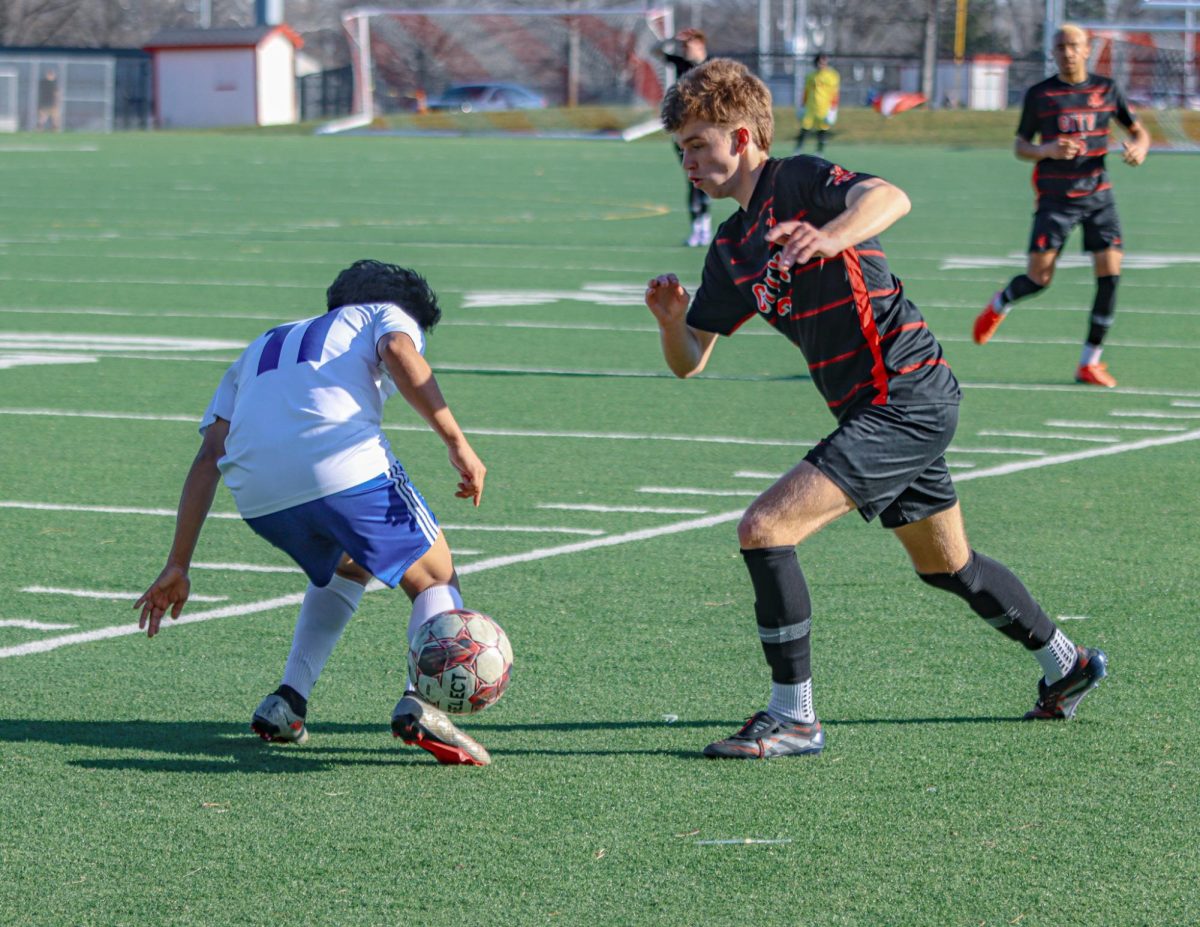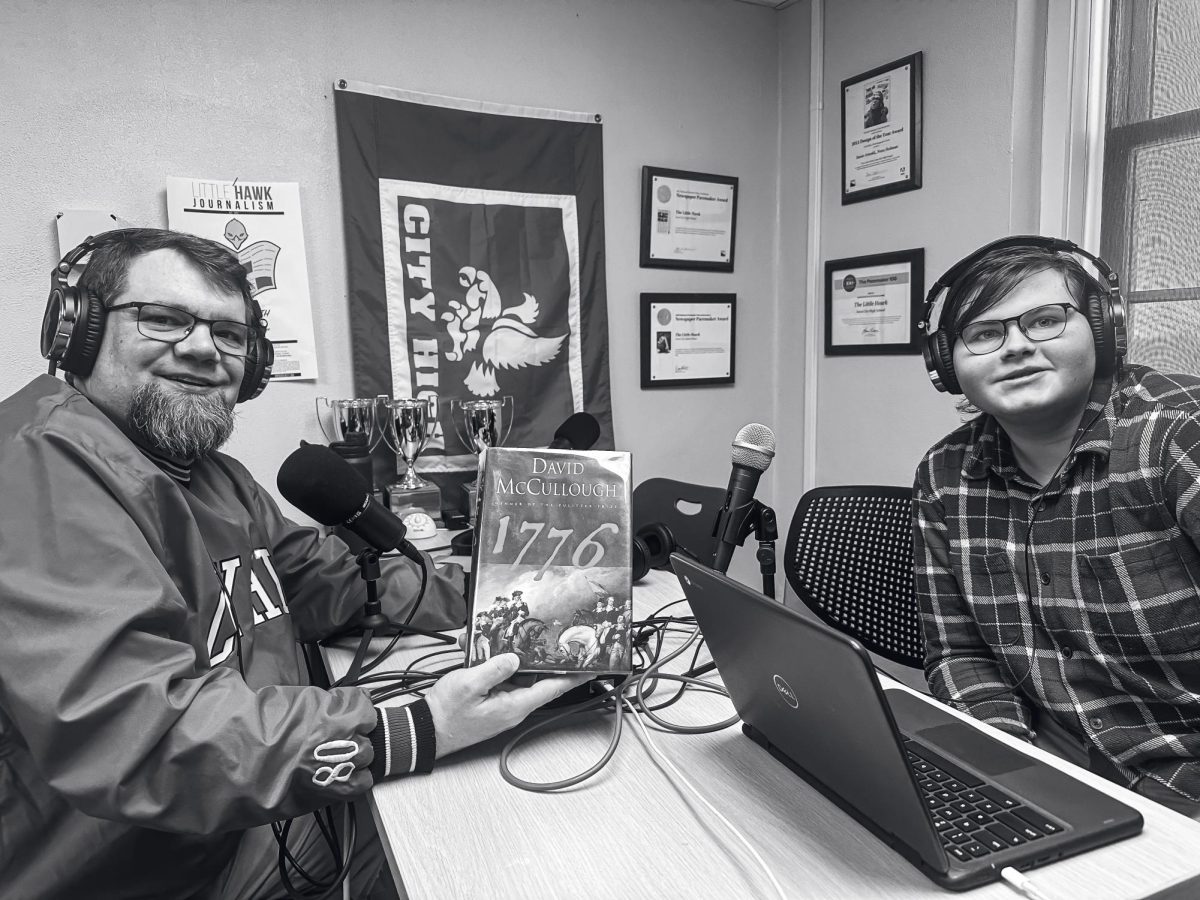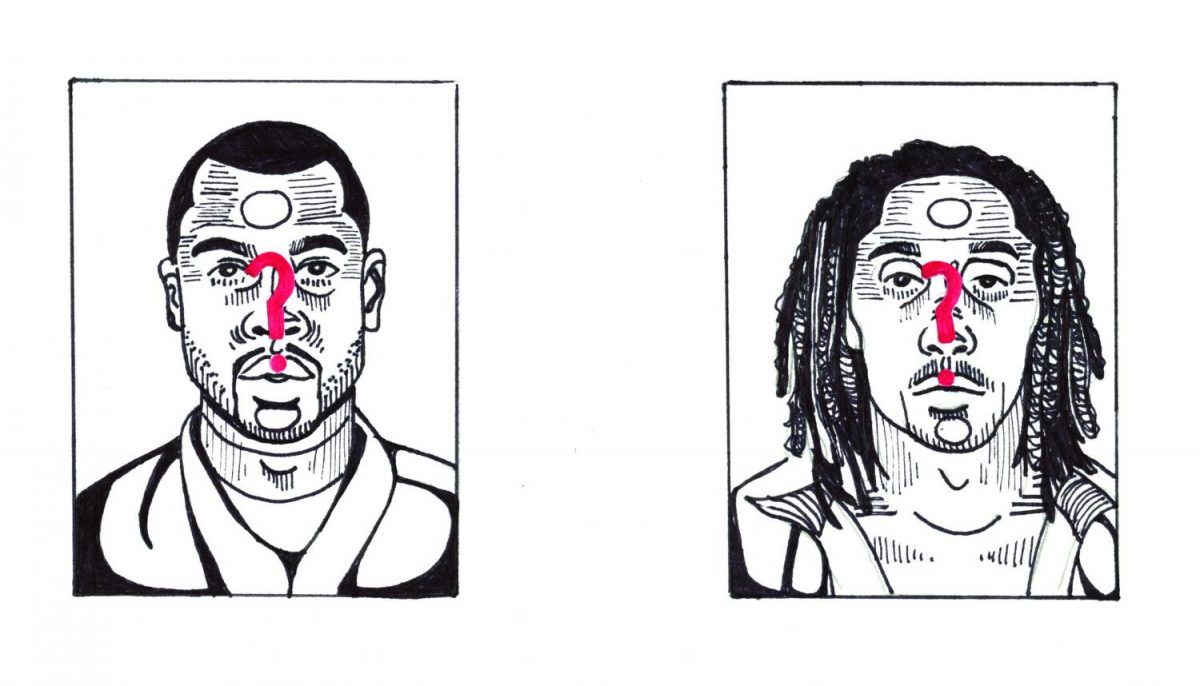Staff Editorial: Through Someone Else’s Eyes
How the media portrays minorities matters-whether they are guilty or not.
Artistic representation of the mugshots of the two men allegedly involved in a shooting in downtown Iowa City.
In the early morning hours of August 27th, violence broke out in the heart of Iowa City. Three people were shot in the ped mall after a fight started. Two men were arrested and charged in connection with the shooting: alleged shooter Lamar Wilson, 23, and Donte Taylor, 21. The charges against Wilson were upgraded days later when one of the victims, Kaleek Jones, 22, died in the hospital.
Lamar Wilson is an Iowa City man. Four years ago, he was arrested and acquitted of another murder in Homewood, Illinois. It is that murder charge that much of the press coverage of Wilson has focused on, rather than the fact that he was found not guilty. Specifically, the media has focused on the fact that he was charged in Illinois, or as The Gazette put it, “near Chicago.” The murder Wilson was charged with did take place in Homewood, a suburb of Chicago. But Homewood is far from stereotype of inner city that the name Chicago conjures up. It was ranked by Forbes as one of the top three liveable suburbs in Chicago. Intentionally done or not, Wilson was another black man linked with inner city gang violence–despite being from Iowa City, where the police have balked at the idea of local gangs.
Depictions of black men as gangsters or thugs are not new. Rather, they have been a part of American media since there has been an American media. One of the earliest films in the modern sense of the word was The Birth of a Nation, a movie supposedly about the Civil War and the Reconstruction. In it, black men, portrayed by white actors in blackface, were characterized as lazy, brutish, and dangerous, especially to white women. In contrast, the KKK was shown as a heroic presence in the aftermath of the war. This film is widely viewed by historians as one of the inspirations for the second wave of the KKK, which lead the Klan to the height of its popularity, bringing with it bigotry, discrimination, and violence in the form of the lynchings of thousands of black people.
The racism in today’s media is far more subtle and insidious. In their eyes, it must seem so different from the bigotry of the past. It’s not black people that are violent, per se, but just those inner city thugs and gangbangers. The fact that they depict those groups as majority black and the fact that they depict a large percentage of black people as being in those groups is just semantics. It is easy to justify racist beliefs under the cover of gang violence. But when you justify racist beliefs, it becomes easy to justify violent, racist actions. Take the infamous case of Trayvon Martin, killed for being a “thug.” His crime? Buying a pack of Skittles and being a black man in a white America.
Martin was innocent. But what if he hadn’t been? What if he had been standing out on a corner, selling marijuana? Would that be justification enough for Zimmerman to shoot him? What if he had gotten into a fight? Would that be enough to condemn him to death, no judge or jury, only an executioner?
The problem with focusing on a black person’s innocence when they are wrongfully killed is that it justifies their wrongful death had they been anything but perfectly innocent. It justifies racist beliefs and racist actions if they are against anyone other than a model citizen. It justifies the depiction of black people in the inner cities as violent and lazy because, after all, no group of people are all saints. All people need to do to justify their bigotry to themselves is look at the crime rates. Any bigoted views they have are alright because minorities in the inner city deserve it–they’re either criminal or criminally lazy in their eyes. Racism is an infection spreading through the lifeblood of America. Eventually, all black people are linked to the inner city, linked to that blackface caricature of their race.
On August 29th, in a University hospital, Kaleek Jones, one of the three victims of the shooting, passed away. Jones was a father of two, with dreams of starting up his own restaurant. He was also a City High graduate and a black man. Now, almost a month after his death, the GoFundme set up by his family hasn’t even reached half of its goal: $10,000 to cover the medical and funeral expenses and to support his family. Where was the outpouring of support? Where was our community? Where were the headlines declaring how good of a person he was? Those headlines were there in July, only months before, when West High graduate Jared Donovan, 20, was killed in a motorcycle crash. But for Kaleek Jones, our eyes were closed, and our mouths were shut.
To donate to the GoFundme for Kaleek, follow this link: http://www.gofundme.com/for-kaleek
Your donation will support the student journalists of Iowa City High School. For 2023, we are trying to update our video and photo studio, purchase new cameras and attend journalism conferences.

































